Vienna (German: Wien; Austro-Bavarian: Wean) is the capital of the Republic of Austria and by far its most populous city, with an urban population of 1.9 million and a metropolitan population of 2.4 million. It is by far the largest city in Austria and the country's artistic, cultural, economic and political centre. It is known for its high living standards, relaxed yet elegant lifestyle and rich musical life.
The thing about Vienna is that it not only is a large city, but that it has always been – as the former home of the Habsburg court and its various empires, it has always housed a large population and enjoyed a privileged position, being home to many artists, especially composers including Beethoven, Haydn, Liszt, Mozart, Schubert and Johann Strauss II. It was long the largest German-speaking city in the world before being surpassed by Berlin. The large historic city centre of Vienna filled with monuments to its imperial past is inscribed on the UNESCO World Heritage List.
Vienna is broadly divided in inner (1–9) and outer districts (10–23). The 23 districts or wards each have a name and a number. They vary immensely in size and each has its own flair. These function subordinately to the city as decentralized administrative branches of the commune, and make local decisions.
We've divided official 23 districts of Vienna into 13 here for travel purposes.
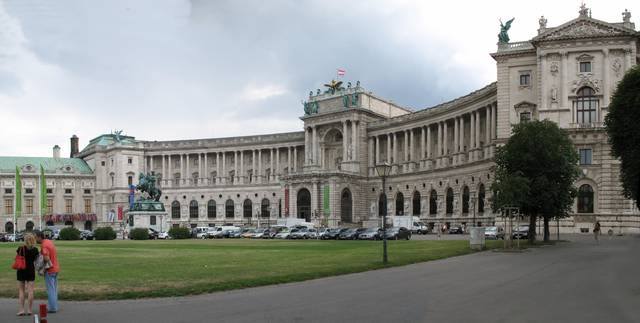
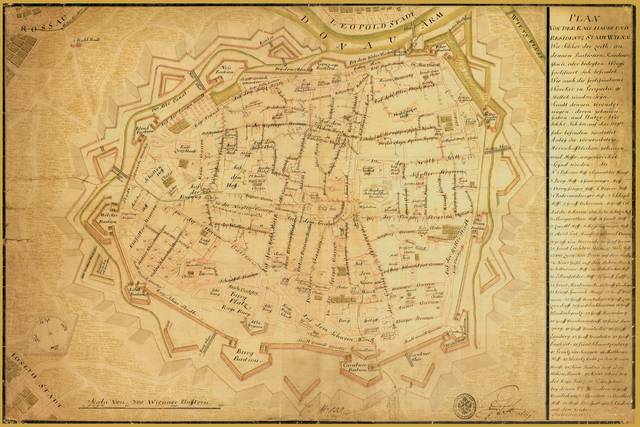 The low-lying Danube plain in and around what is now Vienna has had a human population since at least the late Paleolithic (see Prehistoric Europe); one of the city's most famous artifacts, the 24,000-year-old Venus of Willendorf, now in Vienna's Natural History Museum, was found nearby. Vienna's own recorded history began with the Romans, who founded it in the 1st century CE as Vindobona, one of a line of Roman defensive outposts against Germanic tribes. Vindobona's central garrison was on the site of what is now the Hoher Markt (the "High Market" so-called because of its relative height over the Danube), and you can still see astounding excavations of its foundations there today.
The low-lying Danube plain in and around what is now Vienna has had a human population since at least the late Paleolithic (see Prehistoric Europe); one of the city's most famous artifacts, the 24,000-year-old Venus of Willendorf, now in Vienna's Natural History Museum, was found nearby. Vienna's own recorded history began with the Romans, who founded it in the 1st century CE as Vindobona, one of a line of Roman defensive outposts against Germanic tribes. Vindobona's central garrison was on the site of what is now the Hoher Markt (the "High Market" so-called because of its relative height over the Danube), and you can still see astounding excavations of its foundations there today.
Given its prestige, Vienna hosted the Habsburg court for several centuries, first as the Imperial seat of the Holy Roman Empire, then the capital of the Austrian Empire, and later of the Austro-Hungarian Empire, which finally fell in 1918 with the abdication of the last Emperor Karl I. The court tremendously influenced the culture that exists here even today: Vienna's residents are often overly formal, with small doses of courtliness, polite forms of address, and formal dress attire. One distinguishable paradox of the quirky city is that its residents can be equally modern and progressive as they are extremely old-fashioned.
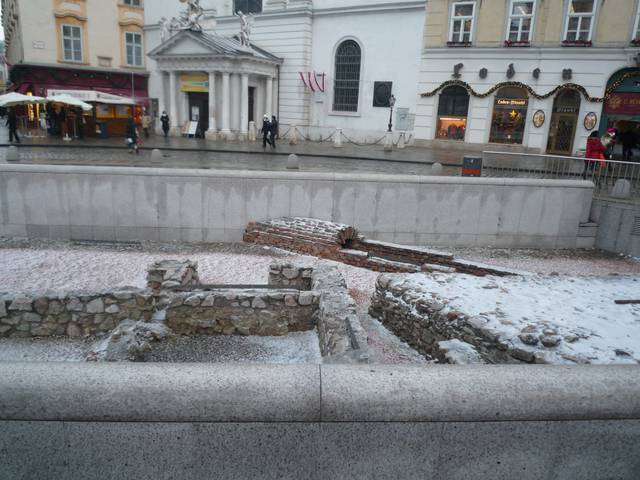
The empires also served to make Vienna a very metropolitan city at an early time, and especially so through the years of industrialization and fall of the Austro-Hungarian Empire at the turn of the 20th century. Imperial Austria and Austro-Hungary were multilingual, multi-ethnic empires and although the German speakers normally played the dominant role in Vienna there has long been ethnic and linguistic diversity in the city. Proof of Jews in the city dates back to 10th century. After World War II many of the city's minorities had been exiled or killed and much of the city lay in ruin. When Austria was given sovereignty after the post World War II occupation, it was eventually established that Austria would be neutral and not join the Eastern Bloc. So the city became more isolated from its previous ties to its Slavic and Hungarian neighbors; the east of Austria was surrounded by the Iron Curtain. Vienna had gone from being the well-established metropolitan city of Central Europe to the capital of a small, predominately German-speaking nation of states with strong regional identities. But when the Iron Curtain came down in the early 1990s an influx of immigrants and Yugoslav refugees came to Vienna. In 1995 Austria joined the EU and her neighbors to the east joined in 2004. In addition, Vienna became a business hub between Eastern and Western Europe due to its imperial past and location, with many multinational companies having offices and facilities in the city and many Austrian companies investing in Eastern Europe. These series of events helped the city rise from the ashes. Vienna once more sits at the heart rather than at the edge of Central Europe, with connections that had been severed for decades slowly but surely being re-established.
Since the formation of the first Austrian Republic and the first mayoral election 1919, the Social Democratic Party of Austria has had the majority of representatives on the common council and controlled the mayoral seat. During the early years, the socialist Red Vienna ("Rote Wien") revolutionized the city, improving the extreme conditions that the industrial revolution and rapid urbanization had created. Most famously the city built many housing projects (housing estates or "Gemeindebauten"), and they also began to offer many social services and made improvements across the board in quality of life. The public housing that was built at that time is now famous for its distinctive style. To this day the city continues to build public housing and about a third of the city's residents live in it, some 600,000 people! Through this high percentage, the quality, and the integration of public housing across the city have kept it from becoming as stigmatized as in most cities. The Viennese are used to having the city government in their lives, and of course have a love-hate relationship with it. Vienna functions on its own as a federal state in the Austrian system (along with 8 other states) and the sense of local pride and home is more of being Viennese than being Austrian, many say.
Vienna was the host city for the Eurovision Song Contest, Europe's largest live televised event, in May 2015.
Traditional Vienna is but one of the many façades of this city; the historic center, a UNESCO world heritage site, is sometimes begrudgingly compared to an open-air museum. But Vienna is also a dynamic young city, famous for its (electronic) music scene with independent labels, cult-status underground record stores, a vibrant Monday through Sunday club scene, multitudes of street performers, and a government that seems overly obsessed with complicated paperwork. However, people are willing to go out of their way or bend the rules a little if they feel they can do someone a favor.
The Viennese have a singular fascination with death, hence the popularity of the Zentralfriedhof (Central Cemetery), where there are more graves than living residents in Vienna, as a strolling location and of Schrammelmusik - highly sentimental music with lyrics pertaining to death. Old-fashioned Sterbevereine (funeral insurance societies-literally translated "death clubs") provide members with the opportunity to save up for a nice funeral throughout the course of their lives. This service does not exist solely to save their children the hassle and expense - it is considered absolutely mandatory to provide for an adequate burial. Vienna even has the "Bestattungsmuseum", a museum devoted to coffins and mortuary science. The country’s morbid obsession may be correlated with its higher suicide rate when compared with the rest of Europe. Here too, the socialist Vienna has its hand, the city also offers a socialized undertaking service, with hearses branded in the same department of public works logo as the subway cars, and a link to the transit-planner on their website.
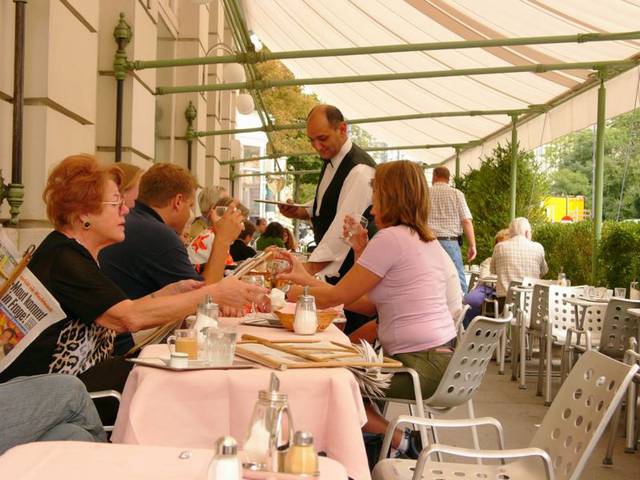
Vienna is also famous for its coffee culture. "Let's have a coffee" is a very commonly heard phrase, because despite incursions by Starbucks and Italian-style espresso bars, the Kaffeehauskultur is still the traditional way to drink a cup of coffee, read the newspaper, meet friends, or fall in love.
Addresses in the Vienna articles are written with the street name following the district name. Badgasse 26, Alsergrund is Badgasse #26 in the 9th district. One can always tell what district you are in by the first number on street signs. Districts can also be made into a postal code by substituting the XX in 1XX0 Vienna (0X for districts below 10), for instance 1090 Vienna for the 9th district and 1200 the 20th, and are sometimes referred to as such.
Common points of reference are often used in Vienna in addition to districts, most notably public transportation stops. Reference to U1/U4 Schwedenplatz or Schwedenplatz (U1, U4) means that something is near to the Schwedenplatz stop on the underground lines U1 and U4. Normally if the place is not directly at the subway stop you can ask around and find it easily.
The Vienna Tourist Board operates information and booking booths at the airport Arrival Hall, 07:00-23:00 and the Tourist-Info. in the center at 1., Albertinaplatz/Maysedergasse (9:00-19:00). Information and free maps are also available from the ÖBB InfoPoints and offices at train stations.
The city has a very centralized layout radiating from the historic first district with the Stephansdom and Stephansplatz at the centre of a bullseye. It is encircled by the Ringstraße (Ring Road), a grand boulevard. Districts 2-9 are considered the core districts and are gathered within the Gürtel (Belt Road), which encircles the core districts as an outer ring concentric to the Ring around the first district, with the notable exception of Leopoldstadt (2). The outer 14 districts are largely less urban but are equally as diverse.
The Vienna Tourist Board operates information and booking booths at the airport Arrival Hall, 07:00-23:00 and the Tourist-Info. in the center at 1., Albertinaplatz/Maysedergasse (9:00-19:00). Information and free maps are also available from the ÖBB InfoPoints and offices at train stations.
Spring starts sometime in late March, normally it is very brief and summer-like weather sets in before the trees have had time to grow back their leaves.
Summer in Vienna is usually warm. Weather in June is moderate and sunny with a light summer windy breeze. In July and August, there are some hot and humid days where it reaches 35°C (95°F), but overall, summer in Vienna is pleasant.
Autumn starts around September, although an "Indian Summer" with warm and sunny days often occurs that month and it gets colder as it approaches November. A main disadvantage of the Viennese climate is that it is rather windy and usually overcast during these months.
Winter in Vienna can be just above 0°C (32°F) and drizzling for days on end, or just below with dustings of snow that manage to melt again quickly. There is the occasional cold snap where it will stay below freezing for a week or two at a time. Due to Vienna's relative easterly position in the Central European Time Zone its daylight hours (if it's not too gray outside entirely) are relatively early during the winter.
The vast majority of shops, restaurants, and cafes are closed on Sunday. The main exceptions are shops and restaurants located in train stations, flea markets, a few small family-run outfits, and tourist oriented souvenir shops. Many museums and other attractions are also closed, and the public transportation system runs less frequently and keeps different hours. If you plan to visit anything on Sunday, be sure to check if it will be open. Besides visiting museums and churches, a stroll through the Prater or a hike in the Wienerwald are good Sunday activities.
Most Viennese speak a range and mix of Viennese German and Standard German ("Hochdeutsch") as their mother tongue, unlike in most other parts of Austria where the local dialect is still more prevalent. The Viennese German is counted amongst the Austria-Bavarian dialects. It used to be specifically split by districts. It also had many Yiddish influences ("Hawara", "Beisl"). However, nowadays, basically everyone speaks Standard German as well, though the Austrian variety of German does differ in accent and somewhat in vocabulary (e.g. plastic bag is "Plastiksackerl", not "Plastiktüte") from Standard German as used in Germany. These differences are small enough that knowing Standard German is enough to get by.
Should someone be so proud as to continue speaking in dialect and you don't understand, just ask the person to speak "Hochdeutsch" (standard German, literally "high German") and he/she generally will. Standard German is the sole official language and thus the main recognized written language.
People in jobs dealing with foreign visitors are usually fluent in English, though English is not as universally spoken as in northern European countries, and signs (including descriptive signs in museums) don't as often include English translations as in some other European countries, so those who don't speak German may find a traveler's phrase book or bilingual dictionary useful in some situations.
Apart from German and Austro-Bavarian, there are sizeable minorities in Vienna, such as Serbian, Croatian, Turkish and Romanian, who use their own languages amongst themselves and might be helpful if you speak any of their languages and come across a person of that origin.
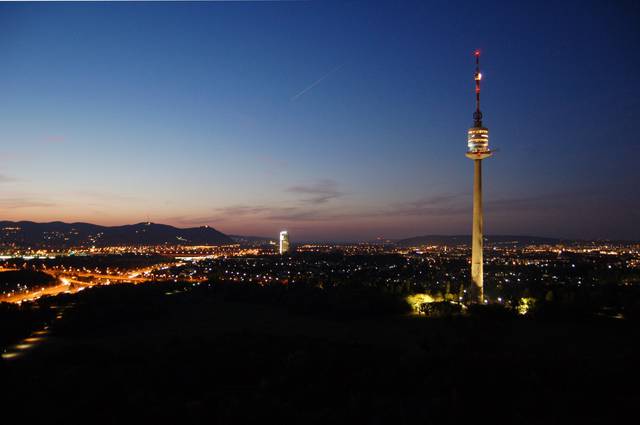 Vienna has a rich history as the capital city of the monarchy, and thus, there is an abundance of historical buildings and museums. Most of these, including Stephansdom (St. Stephen's Cathedral) and the three most well-known museums, Kunsthistorisches Museum (Museum of Fine Arts), Naturhistorisches Museum (Museum of Natural History) and Albertina, are located in the Innere Stadt. The Ring Road (German: Ringstraße) is a circular road surrounding the Innere Stadt district of Vienna and is one of its main sights. Its architecture is typical of the eclectic, historicist style called Ringstraßenstil (Ring Road Style) of the 1860s to 1890s. Built in the style of the Renaissance according to plans by Heinrich von Ferstel, the MAK- Austrian Museum of Applied Arts/Contemporary Art is the first museum building on the Ringstraße. The Schloss Schönbrunn palace, a part of the UNESCO World heritage list, is located in the Outer West area.
Vienna has a rich history as the capital city of the monarchy, and thus, there is an abundance of historical buildings and museums. Most of these, including Stephansdom (St. Stephen's Cathedral) and the three most well-known museums, Kunsthistorisches Museum (Museum of Fine Arts), Naturhistorisches Museum (Museum of Natural History) and Albertina, are located in the Innere Stadt. The Ring Road (German: Ringstraße) is a circular road surrounding the Innere Stadt district of Vienna and is one of its main sights. Its architecture is typical of the eclectic, historicist style called Ringstraßenstil (Ring Road Style) of the 1860s to 1890s. Built in the style of the Renaissance according to plans by Heinrich von Ferstel, the MAK- Austrian Museum of Applied Arts/Contemporary Art is the first museum building on the Ringstraße. The Schloss Schönbrunn palace, a part of the UNESCO World heritage list, is located in the Outer West area.
- Ball Season: One thing you should not miss when you visit Vienna during the carnival season is to attend one of the many glamorous balls in the city, some of them in wonderful elegant locations like the Vienna Hofburg or the City Hall (Rathaus). The most widely known and elegant balls are the Opera Ball in the State Opera or the ball of the Wiener Philharmoniker. Many professional guilds have their own ball, e.g. the Kaffeesiederball by the Vienna Coffee house owners. A different twist is the famous Life Ball, an AIDS/HIV benefit which features celebrities and other attendees wearing outrageous costumes. The ball calendar can be found on the pages of the Vienna City Council
- River and Canal tours — The canal tours are horrible. All you see are trees and industrial buildings. It's a waste of money and time.
- There are also a lot of other open-air-film festivals in summer, e.g. at Karlsplatz, the Vienna Turf Krieau, the Prater, the Arena, the rooftop of City Library on Urban-Loritz-Platz and Schloss Neugebäude.
- In the summer, there is also the ImPulsTanz Festival for contemporary dance & performance. They are also good if you are interested in dance workshops.
Vienna is considered by many to be the spiritual home of European classical music, with many great composers such as Joseph Haydn, Wolfgang Amadeus Mozart, Ludwig van Beethoven, Franz Schubert and Johann Strauss II spending a significant part of their careers in Vienna.
From May to December you can attend concerts of the Vienna Hofburg Orchestra which take place in the Festival Hall and the Redoutensäle of Vienna's Hofburg Imperial Palace. The orchestra's program is composed of Viennese waltz and operetta melodies by Johann Strauss, Franz Lehár and Emmerich Kálmán along with opera arias and duets by Wolfgang Amadeus Mozart. Each year on the evenings of December 31 and January 1 the Vienna Hofburg Orchestra performs traditional Viennese New Year's Eve and New Year's Concerts in the Hofburg's festival halls. These concerts however, along with those that are from similar ensembles, are quite expensive for what they offer, and are intended for the entertainment of tourists.
For a more serious program, other concerts at the Musikverein and the Staatsoper can be attended for as little as €3-4 (standing room). They feature some of the best musicians in the world, including of course, the Vienna Philharmonic Orchestra. With concerts starting at almost the price of a cup of coffee, Vienna boasts a frequent and outstanding roster that is financially accessible to all. Much of the musical scene in Vienna is absent during the summer months, with the exception of the ensembles that cater to tourists. The solution would be to travel to Salzburg, where the Vienna Philharmonic resides during the summer.
For those who wish to watch opera, the Vienna State Opera is the most famous opera house in the city.
Ball Season: One thing you should not miss when you visit Vienna during the carnival season is to attend one of the many glamorous balls in the city, some of them in wonderful elegant locations like the Vienna Hofburg or the City Hall (Rathaus). The most widely known and elegant balls are the Opera Ball in the State Opera or the ball of the Wiener Philharmoniker. Many professional guilds have their own ball, e.g. the Kaffeesiederball by the Vienna Coffee house owners. A different twist is the famous Life Ball, an AIDS/HIV benefit which features celebrities and other attendees wearing outrageous costumes. The ball calendar can be found on the pages of the Vienna City Council
River and Canal tours — The canal tours are horrible. All you see are trees and industrial buildings. It's a waste of money and time.
There are also a lot of other open-air-film festivals in summer, e.g. at Karlsplatz, the Vienna Turf Krieau, the Prater, the Arena, the rooftop of City Library on Urban-Loritz-Platz and Schloss Neugebäude.
In the summer, there is also the ImPulsTanz Festival for contemporary dance & performance. They are also good if you are interested in dance workshops.
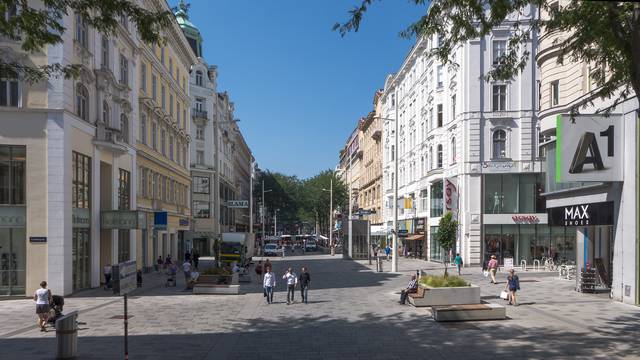 Store hours are generally M-F 08:00 or 09:00 to 18:00 or 19:00, and Sa 09:00 to 18:00, closed Sunday. There are slightly longer hours at some malls. Credit cards are normally accepted at large and at high-end stores. All chains that you can find in the malls also have stores on the city's shopping streets, which tend to be more accessible and tourist friendly. Flea markets are usually can be found on Sundays, where one can buy items at very reasonable prices.
Store hours are generally M-F 08:00 or 09:00 to 18:00 or 19:00, and Sa 09:00 to 18:00, closed Sunday. There are slightly longer hours at some malls. Credit cards are normally accepted at large and at high-end stores. All chains that you can find in the malls also have stores on the city's shopping streets, which tend to be more accessible and tourist friendly. Flea markets are usually can be found on Sundays, where one can buy items at very reasonable prices.
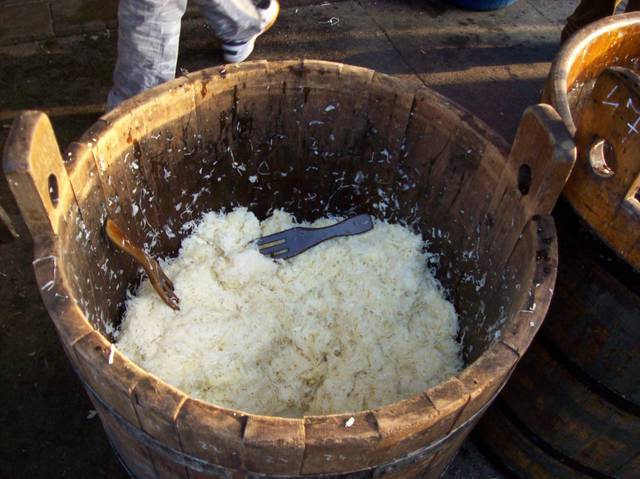 There are 21 markets with stands and small characteristically Viennese hut-like shops that are open daily (except Sunday). Additionally many of these have true farmers' markets, often on Saturday mornings. There is a large variety of sellers and markets, from the upscale to the dirt cheap. Each has several shops of different kinds (butcher, bakery, produce, coffee, etc.) There is another handful of weekly farmers markets around the city and seasonal markets like the Christmas Markets.
There are 21 markets with stands and small characteristically Viennese hut-like shops that are open daily (except Sunday). Additionally many of these have true farmers' markets, often on Saturday mornings. There is a large variety of sellers and markets, from the upscale to the dirt cheap. Each has several shops of different kinds (butcher, bakery, produce, coffee, etc.) There is another handful of weekly farmers markets around the city and seasonal markets like the Christmas Markets.
Open from November 15 or 20 to December 23 or 24, most Viennese Christmas Markets ("Christkindlmarkt", "Adventmarkt" or simply "Weihnachtsmarkt") are not so much for shopping as for eating and drinking. From midday until the late hours of the night, people gather at Christmas markets to drink mulled wine, punch, and chat to one another and the occasional stranger. Entry to all of these markets is free. While Vienna can be a delightful place to visit during the Christmas season, on December 25 and 26 the city is largely shut down.
- Rathaus. More of a fairground than a Christmas market, this is Vienna's largest and busiest incarnation. Located on the large town square between Rathaus and Burgtheater, the Wiener Christkindlmarkt is by far the largest and probably best known Christmas market in Vienna. Large Christmas tree in front of the townhall, skating possibility, adorned trees in the park, often crowded!
- Spittelberg. Probably the most delightful, though often quite packed Christmas market in Vienna, the Spittelberg market is scattered over a series of lanes lined with picturesque early 19th century Biedermeier houses (many of them former brothels, which is the reason the area was spared early 20th century urban renewal). Some of the stalls are extensions of the shops and bars of this normally rather sleepy area.
- Maria-Theresien-Platz. A relatively new market between the two museums and en route to/from the MuseumsQuartier (MQ). It is easy to maneuver than some and the quality of the goods is better than most.
- Schönbrunn. One of the better markets with higher quality goods and a more festive atmosphere in front of Schönbrunn palace. It is easier to spread out here and the specialties are food, handmade soaps, and candles.
- Belvedere. Another addition to the city's Christmas markets, the market in front of the Belvedere palace is spacious and emphasizes the homespun.
- Resselpark/Karlsplatz - A small, alternative and more rambunctious Christmas market in front of Karlskirche.
- Freyung. A fine market in the First District frequented by locals and professionals on their lunch break and downtown shoppers. Focus on handicrafts and original gifts such as hand-made Christmas decorations, mangers or objects made of natural materials. Christmas cakes and biscuits as well as hot punch and Glühwein. There are usually fewer tourists.
Further afield a famous and overly bustling Christmas market may be found at Grafenegg castle. Entry is €7, children under the age of 12 are free.
Rathaus. More of a fairground than a Christmas market, this is Vienna's largest and busiest incarnation. Located on the large town square between Rathaus and Burgtheater, the Wiener Christkindlmarkt is by far the largest and probably best known Christmas market in Vienna. Large Christmas tree in front of the townhall, skating possibility, adorned trees in the park, often crowded!
Spittelberg. Probably the most delightful, though often quite packed Christmas market in Vienna, the Spittelberg market is scattered over a series of lanes lined with picturesque early 19th century Biedermeier houses (many of them former brothels, which is the reason the area was spared early 20th century urban renewal). Some of the stalls are extensions of the shops and bars of this normally rather sleepy area.
Maria-Theresien-Platz. A relatively new market between the two museums and en route to/from the MuseumsQuartier (MQ). It is easy to maneuver than some and the quality of the goods is better than most.
Schönbrunn. One of the better markets with higher quality goods and a more festive atmosphere in front of Schönbrunn palace. It is easier to spread out here and the specialties are food, handmade soaps, and candles.
Belvedere. Another addition to the city's Christmas markets, the market in front of the Belvedere palace is spacious and emphasizes the homespun.
Resselpark/Karlsplatz - A small, alternative and more rambunctious Christmas market in front of Karlskirche.
Freyung. A fine market in the First District frequented by locals and professionals on their lunch break and downtown shoppers. Focus on handicrafts and original gifts such as hand-made Christmas decorations, mangers or objects made of natural materials. Christmas cakes and biscuits as well as hot punch and Glühwein. There are usually fewer tourists.
Charity auctions are common in Vienna. Some stores give their proceeds to social programmes (often second-hand store back-to-work programs similar to Goodwill, or other charity shops).
Viennese supermarkets are not very large, especially compared with the hypermarkets covering the rest of Central Europe. However, there is practically one on every corner. They are open generally M-F 07:00-19:00, Sa 07:90-18:00, later on Sunday and on public holidays, few stores are open: three in train stations (in Westbahnhof to 23:00, in Praterstern and Franz-Josefs-Bahnhof to 21:00), three at the airport (to 23:09) and one at the General Hospital (Allgemeines Krankenhaus, AKH). Hofer, Penny, and Lidl strive to be discount stores, whereas Billa and Spar as well as the larger Merkur tout selection and quality. There is not a major difference in prices. Most regular stores have a deli where the clerks make sandwiches for the cost of the ingredients you select. Although many products are Austrian none of the chains are actually Austrian-owned. If you want to support the local economy more you can do so by frequenting independent shops or visiting actual markets.
Upscale grocers are not common in Vienna.
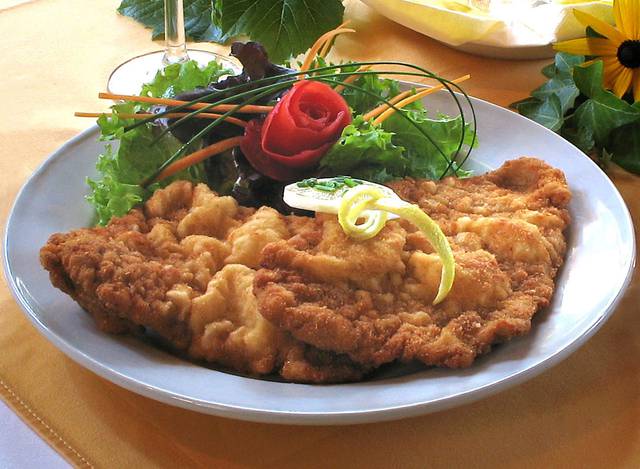
Viennese restaurant menus offer a bewildering variety of terms for dishes, most of which the visitor will never have heard of and many of which aren't in the brief lists of menu terms included in phrase books. However restaurants that have any foreign patrons at all usually have an English menu, though you may have to ask for it: the phrase "English menu" usually will be understood even by wait staff who don't speak English. A small bilingual dictionary will be useful for trying to decipher menu listings: at least it will enable you usually to determine what sort of food (chicken, beef, potato, etc.) is concerned, even if you can't tell how it's prepared. Not only savoury but also sweet main dishes are common in Austria.
Classic Viennese dishes to try are the famous Wiener schnitzel, a thin veal cutlet lightly breaded and fried, and the perhaps less well known Tafelspitz, where a beef roast is simmered in a broth with root vegetables and herbs. Schnitzel made from pork ("vom schwein") is also popular. By law, restaurant menus are supposed to clarify if anything sold as "Wiener schnitzel" is made from something other than veal. As is common in much of eastern and central Europe, mushrooms are very popular, and when they're in season, you'll find a plethora of varieties on restaurant menus and for sale in markets, often for surprisingly low prices, at least if you're from North America. Chanterelles for €10/kg, anyone?
Viennese restaurant portions tend to be large. Many restaurants now include vegetarian options. Most restaurants have daily specials listed on a chalk board or sometimes on a printed insert in the regular menu. These are usually the best bet, though they may not be on the English menu, so you may have to ask to have them explained or try to translate them yourself.
Bread in Viennese restaurants is usually charged as an extra; if there is a basket of it on the table, you'll usually be charged by the piece only if you take some.
Hotel breakfasts vary, but typically consist mainly of a buffet with a variety of rolls, cold cuts, and cheese. Fruit, yogurt, muesli, and often other types of cold cereal are also typically available. Many places will cook some eggs if you ask, or sometimes, especially for guests that are American or British, will offer to do so, but that's mainly seen as something for foreigners, cooked breakfasts not being typically Viennese, and you're unlikely to find any cooked food besides eggs on offer. Still, while the overall style may be "continental," Viennese breakfasts are often considerably more substantial than many other parts of Europe.
Vienna being a fairly cosmopolitan city, there is a wide variety of international cuisine available. Italian, Greek, and Japanese food are particularly popular, although any international food you can name is represented.
Tipping customs are similar to those in Europe and America though tips are slightly smaller; ten percent is usually sufficient in restaurants. Traditionally the way to tip a waiter is to mention the amount of the bill plus tip when you pay; for instance, if the bill is €15.50 you could give the waiter a €20 note and say "siebzehn (seventeen)," meaning he is to take out €15.50 for the bill, €1.50 for the tip, and so give you only €3 change. In this situation English numbers will usually be understood. Sometimes in less formal restaurants you can alternatively drop the tip into the money pouch the waiter usually carries.
Credit cards aren't quite as commonly used in restaurants in Vienna as in Northern European countries, so ask if it's important to know beforehand.
Don't expect "service with a smile" at a Viennese restaurant or cafe. While some servers are friendlier than others, most practice a level of reserved formality that can strike foreigners from more outgoing cultures as austere or even rude. It isn't intended that way, it's mainly a cultural expectation that service should be unobtrusive. So don't be offended if a server doesn't volunteer to discuss the specials or if they don't come to check on you while you're eating - the general expectation is if you want something, you'll get their attention and ask for it, otherwise they should leave you alone.
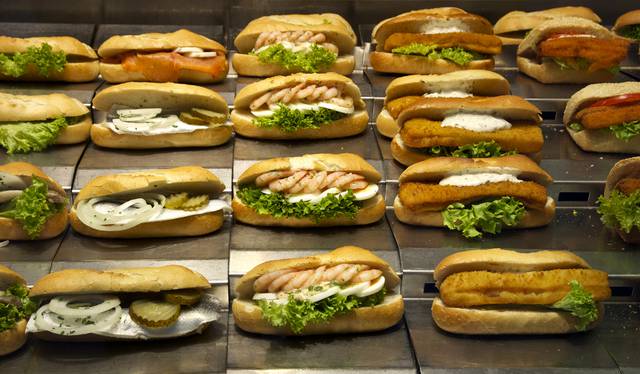
The traditional Viennese fast food is sausage in all shapes and sizes. You can buy hot sausages and hot dogs at snack bars called "Würstlstand" all over the town. The famous Wiener Würstel is known as "Frankfurter" in Vienna, but many inhabitants prefer Bosna (with onions and curry), Burenwurst, and Käsekrainer or "Eitrige" (with melted cheese inside). A würstlstand will typically give a choice of sausages served as a "hot dog" (not a North American hot dog, it just means any kind of sausage served in a bun) or "mit brot" ("with bread," i.e. cut into bite size chunks and served with a small disposable fork, with a roll on the side). You typically get a choice of mustard or ketchup and (rarely) other condiments, which the server will put on for you.
Roast chestnuts ("Maroni") are a common snack during the colder months, and are sold from street stalls all over the city, especially near train and U-Bahn stations, and at Christmas markets.
In addition to this, the local snack culture also includes more ex-Yugoslavian and Turkish varieties of fast food, such as the Döner Kebap, sandwiches of Greek and Turkish origin with roasted meat, lettuce, tomatoes, onions, and yogurt and/or hot sauce. Places that sell kebap often sell takeaway slices of pizza too. Good kebaps can be bought at the Naschmarkt. The lower end of the Naschmarkt (further away from Karlsplatz or city centre) is cheaper than the upper end (closer to Karlsplatz), and the right lane (facing away from the city centre) is reserved for mostly sit-down eateries. Another good place to find snacks (especially while going out) is Schwedenplatz.
By far the cheapest way to get a fast food meal in Austria (and probably the only meal available for just over €1) is buying an Austrian sandwich (sliced brown bread + ham/cheese + gherkin) from a supermarket. Supermarkets with a deli counter (Feinkostabteilung) will prepare sandwiches to take away at no extra charge. You only pay for the ingredients. There is usually a large selection of meat products, cheese, and bread rolls available here, too. You point at the combination you want, can also mention the max total you can pay, and then pay at the cash register. One of the favorites is the "Leberkäsesemmel", which is lightly spiced, very finely ground meat baked in a pan, sliced, and served on a roll. If you know a bit of German, you'll note that "Leberkäse" literally translates to "liver cheese," but it contains no cheese and the Viennese version contains no liver. Freshness and quality at the grocery stores are normally better than at a sandwich stand on the street.
Another great way to eat on a budget is at one of Vienna's hundreds of bakeries. They sell anything from cinnamon rolls to pizza for a good price. It's also a great breakfast-on-the-run alternative because they also have coffee/espresso to go. However, most places do have a couple of tables and chairs where you can enjoy your food.
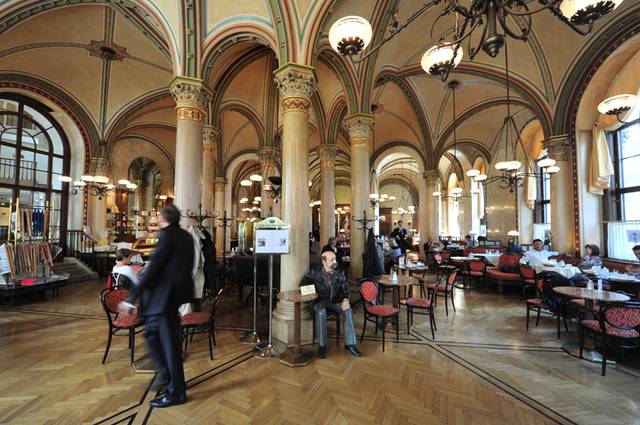 Vienna's Kaffeehäuser (coffee houses) are world famous for their grandness and the lively coffee house culture. Skipping the Kaffeehauskultur is missing out a big part of Viennese culture. You should at least visit one of the countless traditional baroque 19th- or funky 20th-century coffee houses where you can sit down, relax, and enjoy refreshments.
Vienna's Kaffeehäuser (coffee houses) are world famous for their grandness and the lively coffee house culture. Skipping the Kaffeehauskultur is missing out a big part of Viennese culture. You should at least visit one of the countless traditional baroque 19th- or funky 20th-century coffee houses where you can sit down, relax, and enjoy refreshments.
Most cafés also serve beer, wine and liqueurs. Many serve meals, especially at lunch, and these are often cheaper than in restaurants. Most have a fine selection of Torten (tortes or cakes), some offer other baked goods. In general some are more restaurant-like, some more café-like and some more bar-like.
Coffee is obviously an important part of the coffeehouse culture. Vienna was not only the center of the Austrian Empire but also the center of a much larger coffee empire, and the local roasts were sold across Europe. Today many people are still familiar with the term Vienna roast.
Vienna prides itself of its dozens of varieties of different coffees, although the Italian style and names are better known by many youth than the Viennese, the cafés are keeping the traditions alive. Most commonly:
- Kleiner Schwarzer also known simply as a Schwarzer or as a Mokka is the Viennese version of espresso. It is made with a tick more water, a Viennese roast (the point between origin and roast flavor) and it is pulled slowly allowing it to oxidize.
- Großer Schwarzer is a double Schwarzer (similar to a double espresso).
- Kleiner Brauner is a mokka (espresso) with cream, often on the side.
- Großer Brauner is a double Mokka with cream.
- Melange is perhaps the most typical Viennese coffee. Similar to cappuccino but with the Viennese style mokka and more foamy milk in equal parts.
- Verlängerter is mokka (espresso) with extra hot water, similar to a small Americano.
- Kapuziner is a mokka (espresso) with a dollop of whipped cream on top.
- Kaffee Verkehrt (or in the more modern places Kaffee Latte) is the local version of a latte.
Also consider specialties like the Kaisermelange (coffee, milk, egg yolk and cognac) on the menu. Most cafés have a house specialty (for instance, "Kaffee Central" at Café Central). Many coffee houses have a huge selection of international newspapers.
Kleiner Schwarzer also known simply as a Schwarzer or as a Mokka is the Viennese version of espresso. It is made with a tick more water, a Viennese roast (the point between origin and roast flavor) and it is pulled slowly allowing it to oxidize.
Großer Schwarzer is a double Schwarzer (similar to a double espresso).
Kleiner Brauner is a mokka (espresso) with cream, often on the side.
Großer Brauner is a double Mokka with cream.
Melange is perhaps the most typical Viennese coffee. Similar to cappuccino but with the Viennese style mokka and more foamy milk in equal parts.
Verlängerter is mokka (espresso) with extra hot water, similar to a small Americano.
Kapuziner is a mokka (espresso) with a dollop of whipped cream on top.
Kaffee Verkehrt (or in the more modern places Kaffee Latte) is the local version of a latte.
Finding a café is not hard in Vienna; Finding a particular café you are looking for is another story. Most of the baroque "top" coffee houses are on the Ring and main streets of the Innere Stadt, mostly cozier and often less formal 1970s or 80s modern-style coffee houses are hidden away on the Innere Stadt's backstreets, and distributed across the rest of the city (4th district, 7th district, 8th district, Outer West districts, ..).
- Oberlaa. Very Viennese cafes, really delicious bakery and well known confectionery. Also some choice of soups and mains. Several locations, mostly in Innere Stadt. Melange €3.70; Slice of Torte €3.50.
- Aida. Chic but artificial design, mediocre quality, depends on location and luck. Many cafés across Vienna and Lower Austria. Their menus have a very useful graphical design indicating the precise ingredients and proportions in each type of coffee, so it's worth visiting if you are a complete beginner.
Oberlaa. Very Viennese cafes, really delicious bakery and well known confectionery. Also some choice of soups and mains. Several locations, mostly in Innere Stadt. Melange €3.70; Slice of Torte €3.50.
Aida. Chic but artificial design, mediocre quality, depends on location and luck. Many cafés across Vienna and Lower Austria. Their menus have a very useful graphical design indicating the precise ingredients and proportions in each type of coffee, so it's worth visiting if you are a complete beginner.
Rather unusually it is necessary to say some words about Vienna's drinking water.
The majority of Vienna's water comes from the three "Hochquellwasserleitungen." Meaning "high-(as in mountain) spring waterlines (as in aqueducts). Indeed the city's water flows through aqueducts from the mountains around 100 km south of Vienna (Schneeberg and Hochschwab). These were built during the reign of Emperor Franz Josef and supply Vienna with unchlorinated high-quality drinking water, with a considerably higher quality than many bottled waters.
So if you visit this city, it is not necessary to buy water. You can simply drink tap water here unless you prefer sparkling water.
Another speciality is that at typical coffeehouses a coffee is often accompanied by a glass of cold clear water. In most restaurants, you can get a glass of drinking water for free with any order, just specify tap water ("Leitungswasser").
New wine is usually enjoyed at a Heurigen (family-run vineyard bars allowed to the new vintage). Austria in general, but especially the area around Vienna, produces quite a large amount of wine each year. There are even many vineyards within the city in Döbling (19th District). The wine is not often exported and white is more common than red. Grüner Veltliner is a common tart and fresh white wine served almost everywhere. Officially the new wine season begins on November 11 (St Martin's Day), but as early as September, some partially-fermented new wine (called Sturm which is cloudy, because it has not been strained) is available around town at stands and in 2L green bottles (try the Naschmarkt – sometimes the vendors will have samples of this drink, which at about 4% alcohol is less strong than wine). Taverns can call themselves Heurigens whether the wine they serve is their own or not – for genuine in-house product look for a Buschenschank. This is a particularly Viennese Heuriger which can only be open 300 days per year or until their supply of house-made wine runs out. Heurigen can be found e.g. in Grinzing, Sievering (19th district) and Mauer & Rodaun (23rd district) areas, but also in almost every suburban area in Vienna. Even in the center, there are some Stadtheurigen. While the Heurigen of Grinzing are bigger and more famous with tourists, they are often a rip-off. If any of the year’s vintage lasts until next year, it officially becomes Alte (old) wine on the next Saint Martin's Day. The Heurigen in the South of Vienna or in Perchtoldsdorf are much cheaper and serve the same quality as the Heurigen in Grinzing. Also in the Northern suburbs, you can find cheap and somewhat authentic Heurigen. Try the areas of Stammersdorf or Hagenbrunn, for example Karl Matzka, hard to reach by public transport.
After a long day, the perfect place to relax among Viennese are the Heurigen in the suburbs. Somewhat akin to a beer garden, except with wine, these tiny treasures are the only places authorized to serve new wine. New wine is made from the first pressing of the grape and can appear a little cloudy. Be careful, it's stronger than you might think! This is why it's served in very small glasses, 0.25L and up. Some Heurigen serve food, either elaborate Viennese specialties or very simple bread and cheese platters. No matter which one you choose, you're guaranteed to enjoy yourself. Just hop on a convenient outbound tram line, take it to the very last stop, and look for buildings with large, evergreen foliage hung over the doors. Each one is unique, but all are a good bargain. Locals invariably have a favorite: ask around.
Glühwein is hot, sweetened red wine with cinnamon and cloves, served from stalls at Christmas markets. Some markets have a peculiar system where you'll be asked for a deposit on the mug the wine is served in, and when you're finished, you can return it to any glühwein vendor at that market to get your deposit back - payments are worked out among themselves through some mysterious process.
- Wein & Co, +43 1 743 42 00-34. A chain shop for wine lovers featuring a wine bar in every location. Shop locations include Naschmarkt, Mariahilfer Straße, near Burggarten and near Stephansplatz.
Wein & Co, +43 1 743 42 00-34. A chain shop for wine lovers featuring a wine bar in every location. Shop locations include Naschmarkt, Mariahilfer Straße, near Burggarten and near Stephansplatz.
Despite Vienna's stuck-up reputation don't be led to believe it is a quiet city. There are diverse cafés, bars, clubs, parties and festivals as well as thriving nocturnal scenes.
The café scene often continues into the early hours, during the week and on weekends. Additionally there are many traditional neighborhood bars some which also have Viennese food. Most popular though, are bars (some with a nominal cover fee) with a DJ and small dance floor. These are quite comfortable and there are plenty to meet anyones musical taste, many are open all night.
Although "mainstream" is hardly a majority of people in Vienna it is still referred to as such. Even here there is quite a bit of variance between places the conservative working class goes out and the conservative upper class tends to go.
- Gürtel at Nussdorfer Straße (U6) has a few mid-size cheap clubs like Loco and Ride Club around. They all have very cheap booze and cover if you arrive early.
Gürtel at Nussdorfer Straße (U6) has a few mid-size cheap clubs like Loco and Ride Club around. They all have very cheap booze and cover if you arrive early.
Although gay nightlife in Vienna is not concentrated in one area, it's blossoming. It can be difficult to keep up with what's on offer, but luckily Vienna is fairly accepting and you can go out and meet other gay people in most venues. Austria is, however, a very conservative Catholic country, and during the day gay and lesbian couples might get some stares - especially from older people - but at night a younger, less conservative crowd heads out.
- Why Not. Is Vienna's mainstream everyday gay disco. The crowd is varied. In the 1st District at Tiefer Graben 22 (Herrengasse U3). Saturdays are house music free.
- Heavan every Saturday at the Camera Club (Neubaugasse U3) is a mostly younger crowd.
- Meat Market happens regularly at both the Pratersauna and on the Badeschiff (see above). It is more alternative and its the hot major queer party in Vienna these days. The same people put on Dem Schönen Frönen which is similar but with a focus on minimal, instead of alternative music.
- HOMO is the other mainstream alternative gay party that happens every now and again, sometimes in Heavan @ Camera Club (see above).
- Rosa Lilla Villa. Is a gay resource center with an excellent bar and restaurant. (Pilgramgasse U4)
- Gumpendorfer Straße in the 6th District has several very gay-friendly bars to meet most any taste, there is one every block or so.
Why Not. Is Vienna's mainstream everyday gay disco. The crowd is varied. In the 1st District at Tiefer Graben 22 (Herrengasse U3). Saturdays are house music free.
Heavan every Saturday at the Camera Club (Neubaugasse U3) is a mostly younger crowd.
Meat Market happens regularly at both the Pratersauna and on the Badeschiff (see above). It is more alternative and its the hot major queer party in Vienna these days. The same people put on Dem Schönen Frönen which is similar but with a focus on minimal, instead of alternative music.
HOMO is the other mainstream alternative gay party that happens every now and again, sometimes in Heavan @ Camera Club (see above).
Rosa Lilla Villa. Is a gay resource center with an excellent bar and restaurant. (Pilgramgasse U4)
Gumpendorfer Straße in the 6th District has several very gay-friendly bars to meet most any taste, there is one every block or so.
Brothels are legal in Vienna, as is street prostitution. There are male and female prostitutes, many from Austria's neighboring countries (few from Austria), but also from Africa, Latin America and Asia offering their services. Brothels differ greatly from small to the point one-room operations to hokey grand parlors. There is no true red-light district, but there are many 'bars' located on the 'Gürtel' as well as in the 2nd District, but they can be found everywhere. Street prostitution areas exist but should be avoided due to the lack of regulation and high number of trafficked and unregistered workers. There are plenty of go-go clubs as well, though, that are not brothels. Some of these have male and female dancers dancing together and are frequented by men and women together.
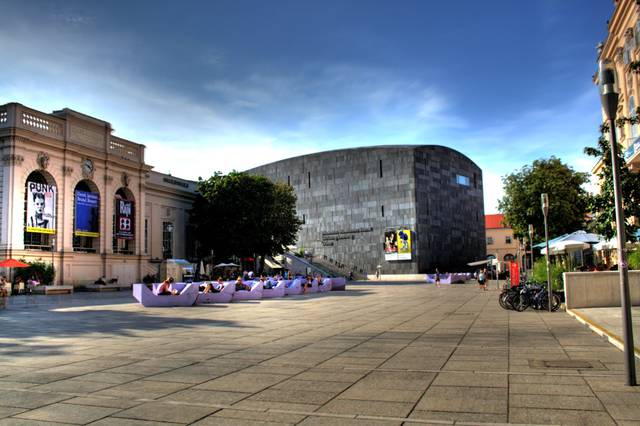 Vienna has a large number of mostly free wireless hotspots in bars, restaurants, and cafés (see drink section). Wifi is known locally as WLAN or Wireless LAN. Those that are on the Freewave Wi-Fi network can be found here. MuseumsQuartier has free wireless internet. There are plenty of internet cafes except for in the first district. Touchscreen media terminals are available (including internet) in many phone booths, much of the content about Vienna is free.
Vienna has a large number of mostly free wireless hotspots in bars, restaurants, and cafés (see drink section). Wifi is known locally as WLAN or Wireless LAN. Those that are on the Freewave Wi-Fi network can be found here. MuseumsQuartier has free wireless internet. There are plenty of internet cafes except for in the first district. Touchscreen media terminals are available (including internet) in many phone booths, much of the content about Vienna is free.
If you plan to visit also places outside the city and you don't want to stay without internet it's recommended to buy a prepaid 3G-simcard (all providers offers fast 3G service, also in rural and remote areas of Austria) and put it in your smartphone or internet USB stick. Download is mostly around 5-6 Mbit/sec and upload 2-3 Mbit. (for HSDPA). The monthly cost for mobile internet is between €4 (1GB) and €15 (unlimited) (August 2011). The best 3G coverage in rural areas is from A1 A1. Vienna is covered very well by HSDPA, HSPA+ and LTE as well.
If you're a European student you can make use of the eduroam service. The University of Vienna, the Vienna University of Economics and Business Administration, the University of Technology, the Medical University of Vienna, the University of Applied Arts Vienna as well as the University of Music and Performing Arts are part of this programme in Vienna.
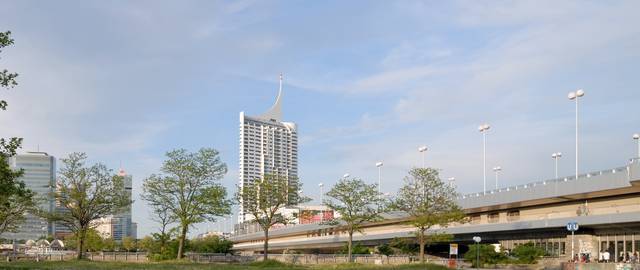
The local public radio aimed towards youth, FM4 used to be an English-language channel and still has much programming in English including the news. 103.8 FM or 91.0 FM.
Television in Austria is almost exclusively in German. The national public media ORF offer limited programming in several Slavonic languages and Hungarian. There are plenty of international English-language channels available.
Local news, culture, events and guides are printed in English in a monthly magazine called the Metropole – Vienna in English. International papers are widely available. There is a New York Times insert in the Monday edition of the local newspaper Der Standard which can be found quickly in coffee houses and elsewhere due to its tan color.
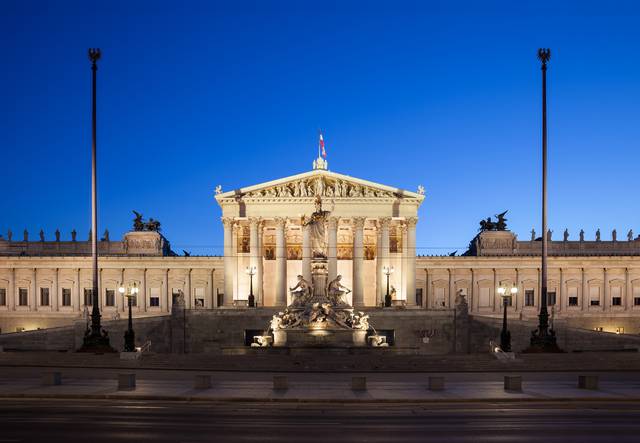 Vienna is potentially one of the safest cities in the world for its size. There are no slums or districts you should avoid. In general, you can visit any part of the city at any time of the day without taking many risks — just use your common sense. The Prater (fair grounds/amusement park area) is said by some locals to be less safe at night, though more in reference to pickpockets than anything else. The Praterstern railway station is a magnet for drunks, homeless people and drug addicts, but they generally do not bother passers-by. As a general rule of thumb, its best to avoid train stations, parks (especially Reumannplatz) and some larger subway stations at night, but even then, nothing bad should happen to you.
Vienna is potentially one of the safest cities in the world for its size. There are no slums or districts you should avoid. In general, you can visit any part of the city at any time of the day without taking many risks — just use your common sense. The Prater (fair grounds/amusement park area) is said by some locals to be less safe at night, though more in reference to pickpockets than anything else. The Praterstern railway station is a magnet for drunks, homeless people and drug addicts, but they generally do not bother passers-by. As a general rule of thumb, its best to avoid train stations, parks (especially Reumannplatz) and some larger subway stations at night, but even then, nothing bad should happen to you.
As in any major city, watch out for pickpockets who grab and run when boarding the U-Bahn. Petty crimes (like jackets 'going missing') are more common and normally go unreported and won't get much sympathy. There have been a very few racist assaults in Vienna (even some by the police themselves). One runs the risk of being pickpocketed. Schwedenplatz, along the Ring, is sleazy in the evenings, but basically harmless; the Stadtpark, along the Ring, to the East, is a bit deserted at night and therefore best avoided.
Prostitution is legal, even on the street, and is common around the area of the Prater. Ironically, some of the areas are a stone's thrown from the UNODC Headquarters (the UN agency responsible for combating human trafficking) and are human trafficking hubs for all of Europe. Many of these prostitutes are not registered and a high number are known to be trafficked, so take care if seeking their services. It is safer for everyone involved to visit a brothel. Women dressed in a certain manner walking around these areas alone at night might feel uncomfortable being checked-out in a certain way but there is no real danger. (There is no male street-prostitution to speak of in Vienna.)
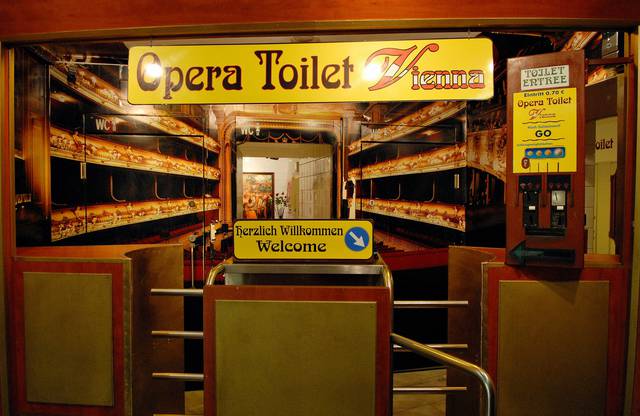
There have been some reports of fraud around Karlsplatz and the Ring. The usual scenario is that someone will stop you and ask for directions. A couple of other guys show up claiming to be police, showing a badge (must be fake). They ask if you were getting drugs from the other guy and then will ask for your passport and wallet for verification. When you are busy trying to convince them that your passport is valid, one of them sneaks out some money from your wallet. Best to tell them that you want to go to the police station — there is one at Karlsplatz U-Bahnstation. It's a minor annoyance, but it's better to be careful. In a different case of fraud they try to convince you that your money is counterfeit money and that they have to inspect it. As always use common sense: police are taught to approach you in a very distinctive way (you will notice if they do so), the badge must have Polizei ([ˌpɔlɪˈʦaɪ̯] police) and the Austrian coat of arms and/or the Austrian flag located somewhere on it, and they will be willing to bring you to the police station or a properly uniformed officer.
Real Viennese police officers are virtually always honest and polite, and will do their best to assist you if you need them, although many of them have limited to non-existent English skills. If you need to report a serious crime and don't speak German, they will usually manage to round up an English-speaking officer.
Do not walk on the bike lanes and cross them like you would cross any other road. Some bike lanes are hard to recognize (e.g. on the "Ring" in Vienna) and some cyclists bike rather fast. Walking on bike lines is not only considered impolite but it is illegal and you run the danger of getting hit.
Pay attention to the tram tracks in Vienna. Unlike other cities, Viennese trams move very fast and can easily kill you if they hit you. The modern Viennese trams are hard to hear as well. If you encounter tram tracks and you must cross the road, make sure to look both ways before crossing. If you park near tram tracks and you have to get off on the same side as the street, make sure to look both ways as well.
If you see people gambling on the streets (usually in popular tourists' destinations like Stephansplatz or Mariahilfer Straße), stay away! The modus operandi usually involves a guy playing the classic game of "hiding the ball". This involves covering the ball (or small trinket) with either a bottle cap or a match box and swirling it around with two other bottle caps asking people to guess the position of the ball. The game is set in a way that you can easily see the ball's position. This is done to lure the unsuspecting person into placing a wager. There are usually two main players and, between them, they will lose and win money back and forth to give the appearance that it is a fair game - do not be tricked! They are from the same gang. Once you get greedy and get lured in, you will surely lose your money! The person in control of the bottle caps will remove the ball from their position through sleight of hand and you will never see your money back. Besides the two or three other players involved, there are usually at least two lookouts - one on each side of 'stage'. Vienna has plenty of legal casinos if you care to try your luck.
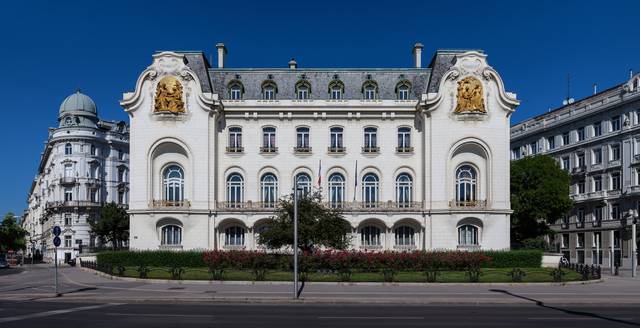 In addition, it is common for suspicious persons to approach you in the city center if you are standing still for a while (particularly if eating at outdoor tables). They will be holding magazines for sale, and will ask you if you are interested in looking at one for free. They are typically very aggressive in their demeanor. Do not be fooled by them! It is not free. If you look at the magazine for free, they will refuse to take the magazine back and demand payment for it at a high cost (typically €2, which is the price of local homeless' magazines in Austria like "Augustin", but they are in German anyways and it indeed has become a trend among non-related people to abuse the idea). The best response in this situation is, when they first approach, to simply wave your hands demonstratively to say no while shaking your head and repeat the phrase "Nein danke" ([naɪ̯n ˈdaŋkə] no thank you) to them repeatedly until they leave. If police are nearby, these people may accuse you of stealing the magazine, but many police know of their trickery so stand your ground. They are not violent and just trying to get money from you, so do not be afraid that they will hurt you if you tell them no.
In addition, it is common for suspicious persons to approach you in the city center if you are standing still for a while (particularly if eating at outdoor tables). They will be holding magazines for sale, and will ask you if you are interested in looking at one for free. They are typically very aggressive in their demeanor. Do not be fooled by them! It is not free. If you look at the magazine for free, they will refuse to take the magazine back and demand payment for it at a high cost (typically €2, which is the price of local homeless' magazines in Austria like "Augustin", but they are in German anyways and it indeed has become a trend among non-related people to abuse the idea). The best response in this situation is, when they first approach, to simply wave your hands demonstratively to say no while shaking your head and repeat the phrase "Nein danke" ([naɪ̯n ˈdaŋkə] no thank you) to them repeatedly until they leave. If police are nearby, these people may accuse you of stealing the magazine, but many police know of their trickery so stand your ground. They are not violent and just trying to get money from you, so do not be afraid that they will hurt you if you tell them no.
|
|
Vienna's metropolitan area is large, and its suburban rail takes you to suburbs so large that they are worth a visit in their own right. All of the following places are within the metropolitan area and reachable on an all-zone Vienna travelcard (and yes, this also applies to Sopron).
- Krems, a smaller and historic town at the entrance of the Wachau valley about 80 km east of Vienna. Reachable by rail from Wien Franz-Josefs-Bahnhof, Wien Spittelau (U4, U6) and Wien Heiligenstadt (U4) with suburban trains to "Krems/Donau". There are hourly connections and the travel time is about one hour. Krems is relatively small, so you can walk there or rent a bike.
- Baden bei Wien, is a smaller historic town 25 km south of Vienna. Famous for its bathes and thermal waters. It features many beautiful buildings and parks from the Biedermeier period. There is a direct tram line going from the Vienna Opera to Baden otherwise faster trains are available too.
- St. Pölten, the capital of Lower Austria, hosts many sights. One is the Dom zu St. Pölten, a baroque church which until 1722 served as a Roman basilica cathedral. The St. Pöltner Rathaus (city hall) and the Pottenbrunn Castle (which can only be seen from the outside) are also worth a visit. St. Pölten is accessible by an hourly suburban rail service from Westbahnhof station (U-Bahn U3) which takes 80 minutes to St. Pölten (passengers for Pottenbrunn Castle should get off at Pottenbrunn, one stop before St. Pölten). Total travel time from the city centre is 100 min.
- Wiener Neustadt also has a lot to offer for tourists: the cathedral, renovated in 1975-1999, the castle and the city museum to name a few. The city is reachable by suburban train from Wien Mitte station on the S-Bahn S6 (via Ebenfurth) and S9 (via Baden) routes, and the travel time is 75-80 min.
- Eisenstadt, the capital of Burgenland, hosts several large churches as well as the Esterházy castle which offers a wine cellar, gift shop, guided tours, and concerts in the famous Haydnsaal as well as the large garden on the back. There are two suburban rail connections: the direct service Hauptbahnhof - Eisenstadt - Wulkaprodersdorf - (Wiener Neustadt) which takes 67 min to Eisenstadt, and the Deutschkreutz-bound service from Meidling to Wulkaprodersdorf + connecting service on the Hauptbahnhof route (opposite direction, towards Hauptbahnhof) to Eisenstadt, which takes 1 hour from Meidling and is thus slightly faster. However, from the city centre both routes take 80 minutes so you might as well go with the direct service from Hauptbahnhof.
- Sopron, a historic town in Hungary which is also reachable by suburban rail: from Wien Meidling (U-Bahn U1 to Südtiroler Platz and suburban train to Meidling) the hourly service to Deutschkreutz takes you to Sopron in 70 min. Total travel time from the city centre is 90 minutes.
- Salzburg is the fourth largest city in Austria. Its "Old Town", with its world famous baroque architecture, is one of the best-preserved city centers in the German-speaking world and was listed as a UNESCO World Heritage Site in 1997. There are direct trains from Vienna taking 2.5 hours.
- Graz is the second-largest city in Austria. The City of Graz including its historic centre and Schloss Eggenberg is a world heritage site. There are direct trains from Vienna taking 2.5 hours.
- Bratislava, the capital of Slovakia, is 55 km from Vienna and reachable by two suburban rail routes: one runs to Hlavna stanica via eastern Vienna and the other one to Petrzalka via the southeast. The latter takes 57 minutes and the former 71 minutes. Both lines originate at Hauptbahnhof station (U-Bahn U1 to Hauptbahnhof / Südtiroler Platz or suburban train to Hauptbahnhof). However, depending on your point of origin, taking U-Bahn U2 to Stadlau or U3 to Simmering and suburban train from either to Hlavna stanica may be faster than travelling via Hauptbahnhof. Travel time from the city centre via Hauptbahnhof (to Petrzalka) or Stadlau (to Hlavna stanica) is 75 min. You may also consider making the journey by ferry: The Twin City Liner makes the journey through the Danube. It takes about 75 minutes and costs €20.
- Brno, a city of around 400,000 people in the Czech Republic with close historical links with Vienna, is 1.5 hours from Vienna by fast train.
- Prague, the capital of the Czech Republic, is a very well preserved medieval city. The city's historic buildings and narrow, winding streets are testament to its centuries-old role as capital of the historic region of Bohemia.
- Innsbruck, regional capital of Tyrol and largest city in the Alps.
- Budapest, the capital city of Hungary, is a beautiful city located on the banks of Danube. It is a UNESCO World Heritage site for the cultural and architectural significance.
- Slovenia, a small but very beautiful country which offers a lot of tourist attractions (2012 European capital of Culture Maribor, charming Ljubljana, Julian Alps, gorges [Tolmin, Vintgar], caves [Postojna], coast [Piran] and amazingly beautiful Bled lake)
